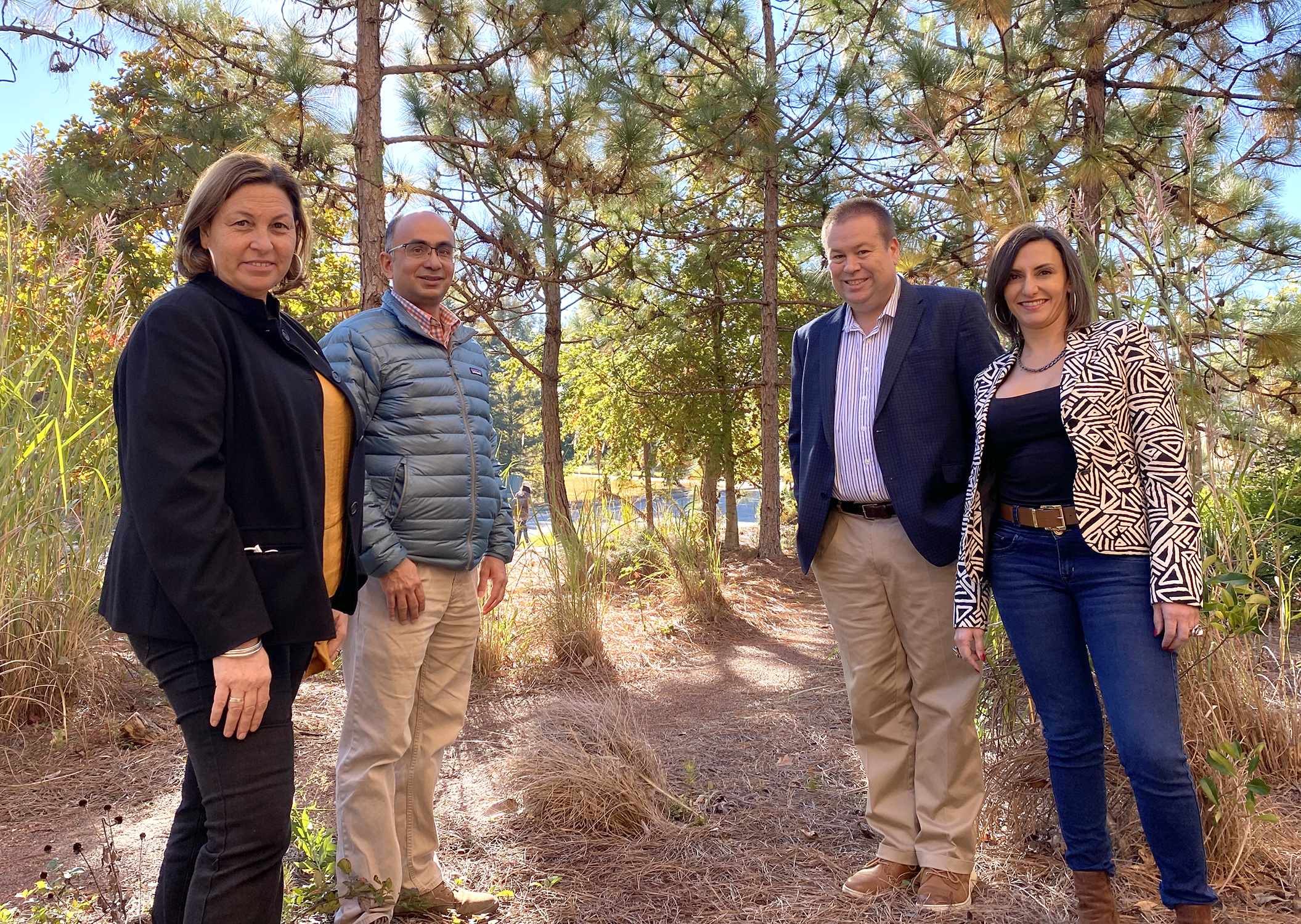An interdisciplinary project connecting several Auburn University faculty and fellow scientists will address the hard-hitting reality that affordable housing is out of reach for many Americans living in rural areas.
But the path of this research may lead to viable solutions that would have seemed futuristic mere years ago: planning advanced manufacturing that helps utilize waste biomaterials, which can then be produced through additive manufacturing—more commonly known as 3D printing—to create housing or building components.
The study, which spans the disciplines of engineering, chemistry, forest resources and architecture, also draws strongly upon the expertise of scientists at its partner institution, the University of Idaho, with Michael Maughan, an assistant professor of mechanical engineering, at the helm.
The Auburn-led portion of this interdisciplinary project will focus on bio-resin development as a feedstock for 3D printing, which will be done at Idaho. This process will include conversion of biomass into chemicals and nanomaterials to help improve the sustainability of the resin.
Available housing is a reality for only one-half of households, said Brian Via, the Regions Bank Professor in Auburn’s School of Forestry of Wildlife Sciences and director of the school’s Forest Products Development Center. Via is a principal investigator for the new research project funded at approximately $3.9 million from the National Science Foundation’s Research Infrastructure Improvement Program.
“The problem of lack of affordable housing is further compounded for minority groups, which experience poverty at twice the rate of other populations,” he said.
While seeking solutions for this dire societal issue, the project will also investigate the environmental impact of conventional concrete and steel used in the construction of traditional buildings in comparison with tall timber buildings, which emit one-third to one-half of the greenhouse gasses of those traditional materials, Via said.
“Recently, the U.S. is trending toward mass timber buildings as a first-generation material to reduce our carbon footprint,” Via said. “However, advanced manufacturing can help to utilize more biomaterial waste from forest resources that can then be 3D printed into housing or building components.”
The proposed interdisciplinary project, “Developing a Circular Bio-Based Framework For Architecture, Engineering and Construction Through Additive Manufacturing,” targets what is called the Advanced Manufacturing Industry of the Future.
“We will manufacture 3D-printed wall panels that can be used in housing and building construction,” Via said. “This will allow for precise construction in a manufacturing environment using sustainable materials that can be shipped to the construction site. Through biobased polymers and fibers, we can 3D print building components that allow for end-of-life recycling.”
Research team member Maria Auad, the W. Allen and Martha Reed Professor in Auburn’s Samuel Ginn College of Engineering and director of the Center Polymer and Advance Composites at Auburn, said the project relies in large part on developing sustainable adhesives derived from renewable forest biomass and other waste resources, typically disposed of in landfills.
“The thematic basis of our proposal is to develop innovative materials that will be environment-friendly, less dependent on depleting petroleum resources and will use natural sources or waste products with the realization of the impact on the environment that the current generation of composite materials have at the end of their life,” Auad said.
Team member Sushil Adhikari, professor in the College of Agriculture and director of Auburn’s Bioenergy and Bioproducts Center, said it is crucial to find ways to utilize forest biomass and other agricultural residues to produce resilient buildings with a low carbon footprint.
“In this project, we are developing resins and adhesive from waste materials while minimizing the energy input,” Adhikari said.
His role is to find ways to produce chemicals using a fast process of pyrolysis—the thermal degradation of plastic waste at high temperatures in the absence of oxygen—for resin synthesis. He will also train graduate students and postdoctoral students who will contribute to circular-based bioeconomy research.
In this research, Maria Soledad Peresin, associate professor of forest biomaterials in the School of Forestry and Wildlife Sciences, is focused on nanocellulose production, characterization and chemical modification to be included in bio-resin formulations to improve the mechanical performance of the composites for 3D printing of housing and building components.
As with Adhikari, she is enthusiastic about this venture’s effect on the next generation of scientists.
“The project offers a unique opportunity to both undergraduate and graduate students to be involved in cutting-edge technologies and sustainable development,” Peresin said.
That educational impact is a key component, Via said, as one endeavor of the research is to train a new STEM-based workforce and scientists for this future industry.
Janaki Alavalapati, dean of the School of Forestry and Wildlife Sciences, congratulated the team on its efforts.
“This team comprised of researchers from diverse specialties throughout the Auburn campus is creating a template for the future of sustainable manufacturing, including workable approaches to the lack of affordable housing and so much more,” Alavalapati said. “Their inclusion of undergraduate and graduate students, as well as those in postdoctoral study, ensures that these innovations continue and build upon one another.”
Via emphasized that stakeholders across the supply chain will also feel the impact.
“Alabama is third nationally in timberland production, while Idaho—our Pacific Northwest partner—also contributes significantly to the forest products industry,” he said. “However, forest landowners often have lower-value trees that don’t meet the needs of local sawmills for traditional lumber or mass timber materials such as cross-laminated timber, or CLT. Therefore, we are hoping to expand a new product line for these wood species so they can be utilized more effectively for the benefit of the landowner.”
(Written by Teri Greene)











